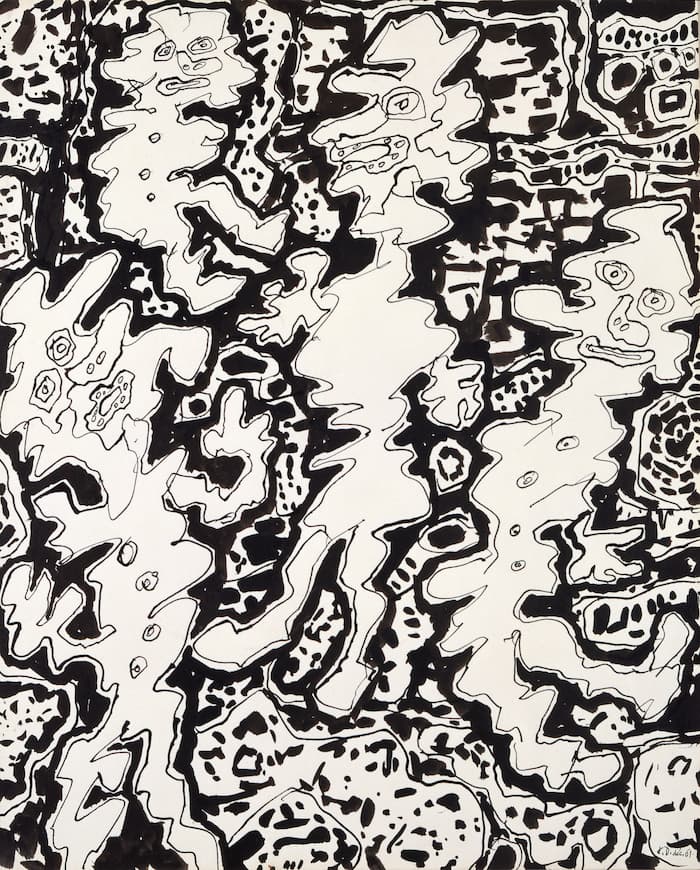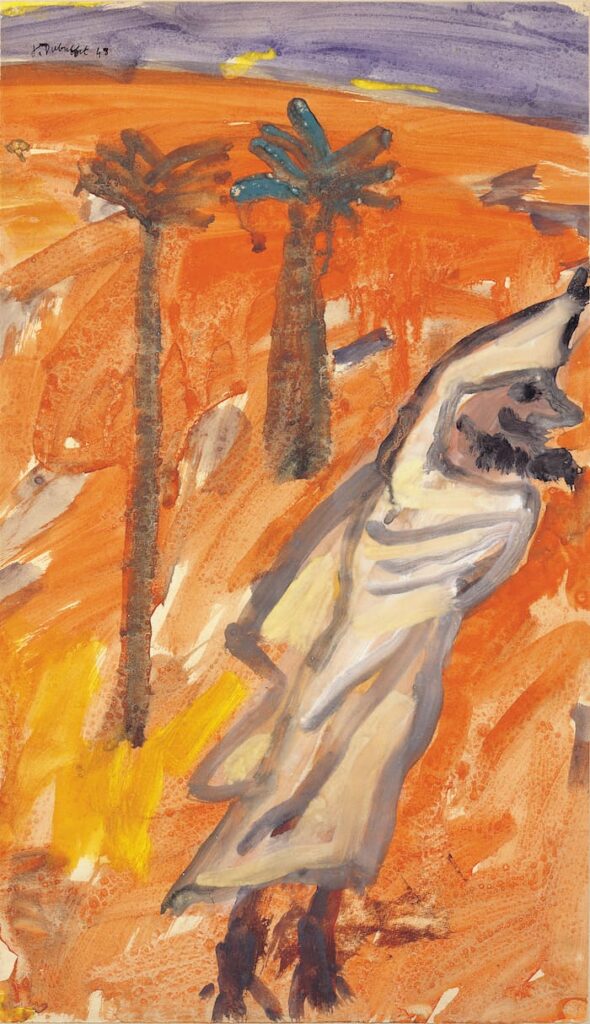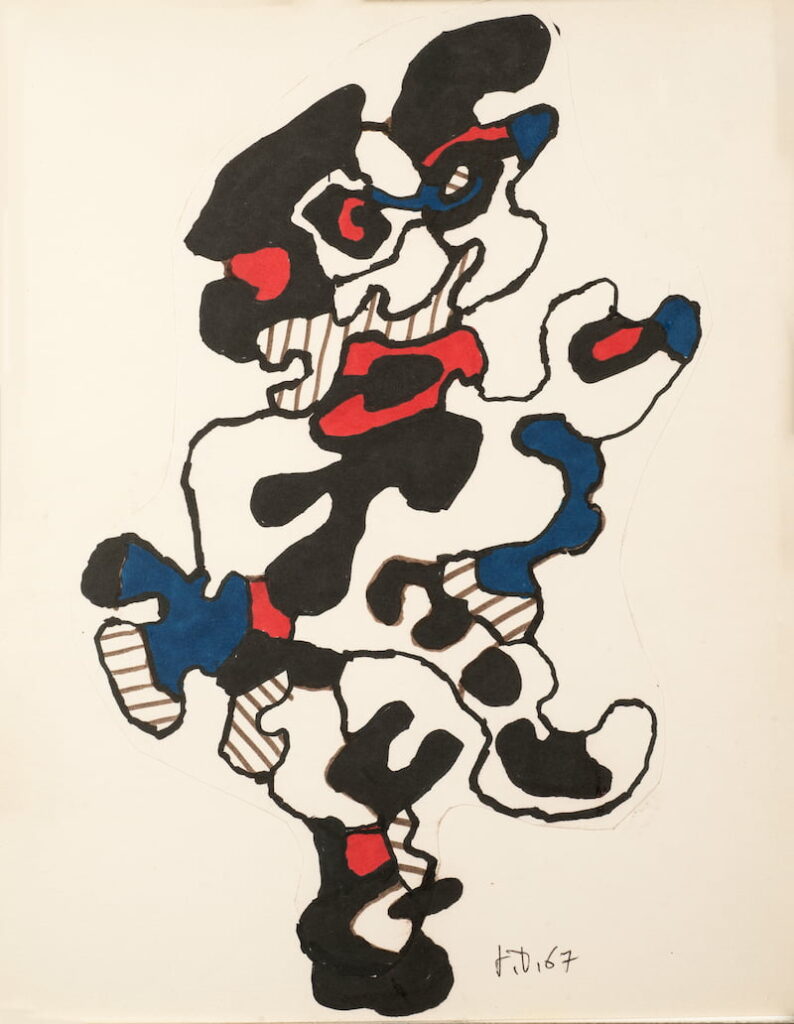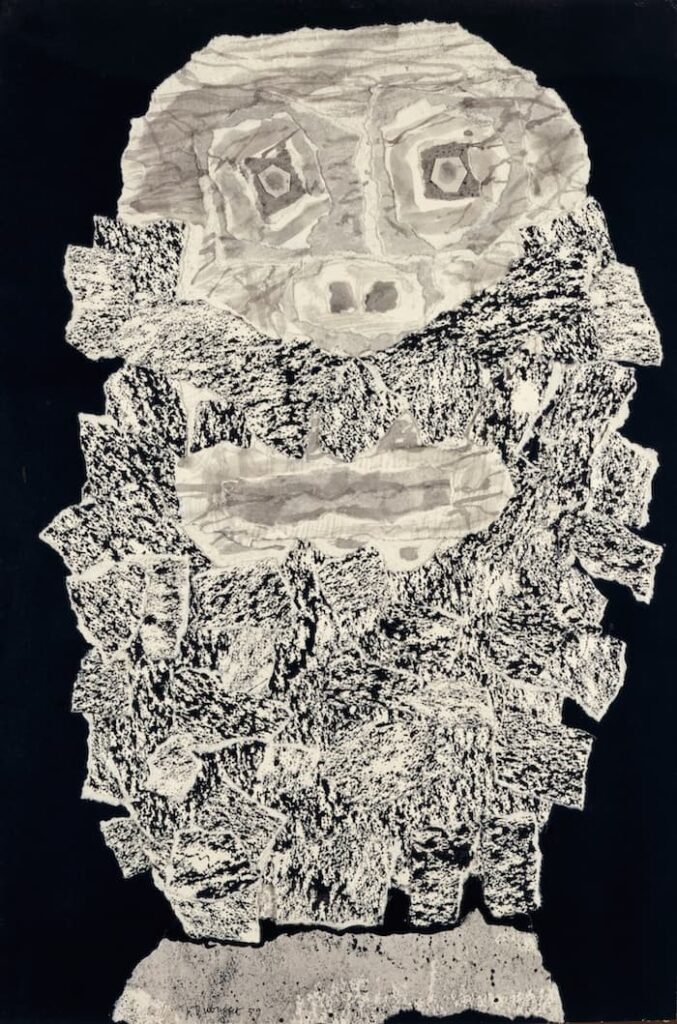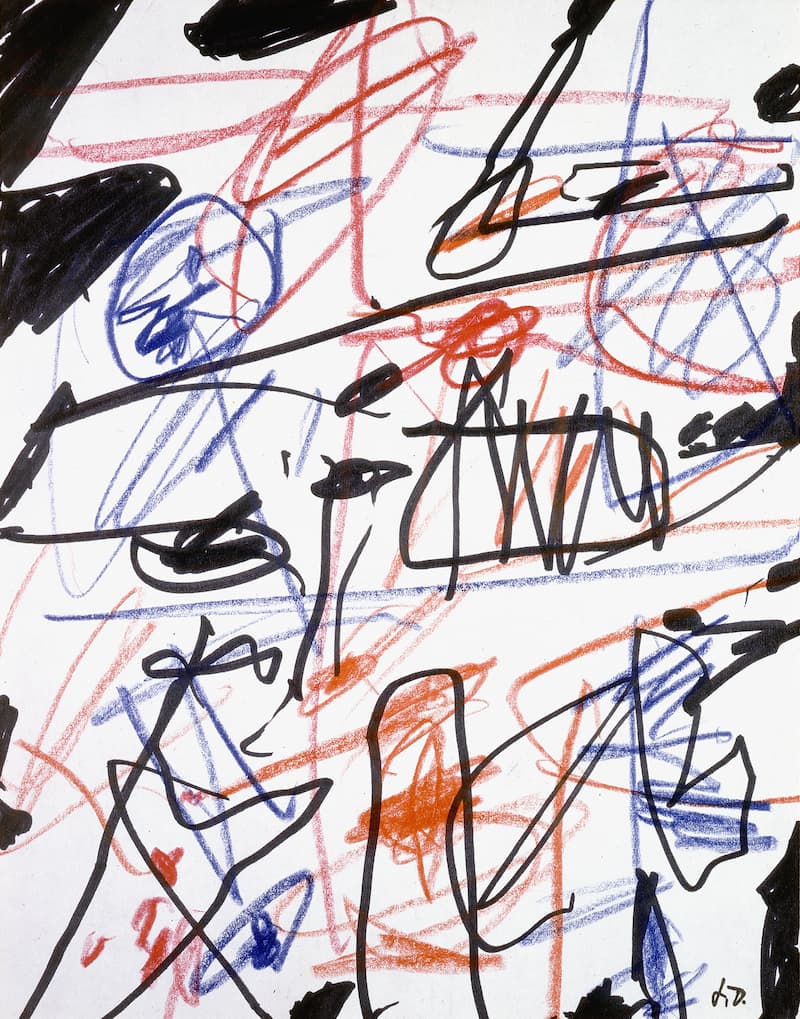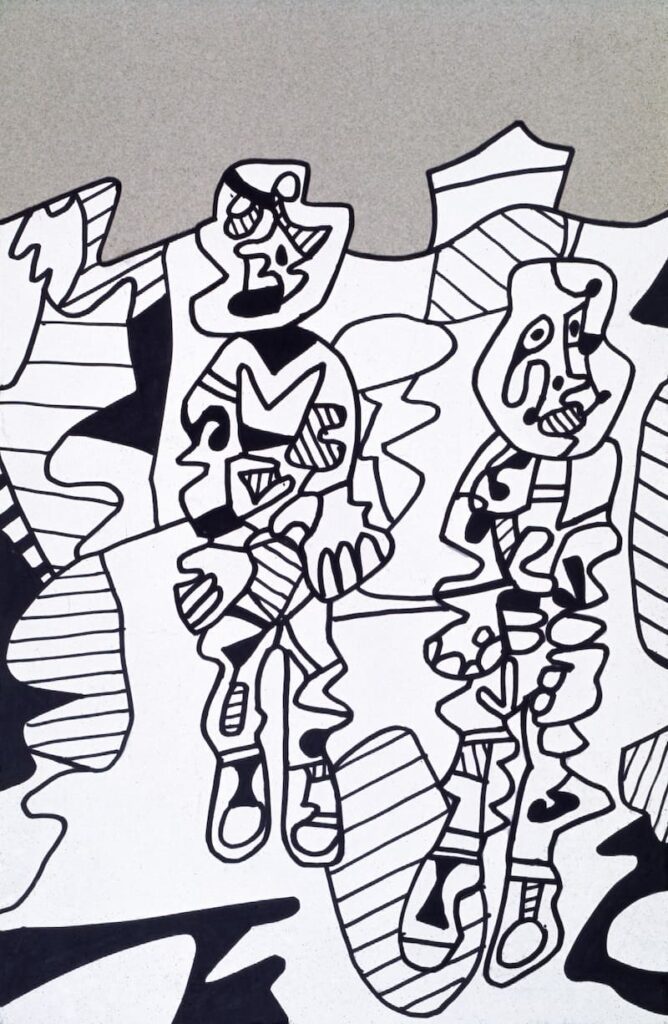
The Fondation Dubuffet, which celebrates its 50th anniversary in 2024, has been chosen to be the guest of honor at this year's Salon du Dessin.
Created by the artist himself, the foundation was recognized of public utility by decree in 1974. The present exhibition is one of the first events organized for this anniversary. It follows in the footsteps of the prestigious institutions invited until now, which chose to exhibit the finest "sheets" from their collections. The term "sheet" has a conventional resonance that Jean Dubuffet, who never ceased to oppose academic values, would undoubtedly have rejected. The foundation's choice was based on the variety of techniques and their inventive use by the artist, but whose common medium is paper.
With a collection of more than 1,300 works on paper, donated by the artist during his lifetime or acquired more recently, the foundation has selected 55 works created between 1935 and 1985.
Jean Dubuffet (1901-1985), a major artist of the second half of the 20th century, engaged, in 1942, in a vast enterprise to destabilize the cultural establishment. He opposed those who defended the notion of fine drawing with the notion of bad drawing. In an interview in which he is both interviewee and interviewer, he explains: “We commonly call drawing well when one tries to get close to a photographic shot, and that's what I think of as drawing badly, or rather not drawing at all. All art production, no matter how humble, is required to be creative”.
Jean DUBUFFET
Site avec quatre personnages
India ink on paper
40,5 x 32,5 cm
December 24, 1961
Coll. Fondation Dubuffet, Paris © Fondation Dubuffet / ADAGP, Paris
Jean DUBUFFET
Le burnous au vent
Glue paint on paper
44,5 x 25,5 cm
El Goléa, January-April 1948
Coll. Fondation Dubuffet, Paris
© Fondation Dubuffet / ADAGP, Paris
But before you can achieve creative freedom, you have need to learn in order to unlearn. Contrary to popular belief, Dubuffet's education was academic. As a young high-school student in Le Havre, he assiduously attended evening classes at the École des Beaux-Arts, during which he "drew furiously". In 1918, after passing his baccalauréat, he joined the Académie Julian in Paris, where he learned "to work full-time with charcoal from a live model". Dissatisfied with the Academie's teaching, he decided to work alone. “Nothing, wrote Jean Dubuffet, seems to me more false, more stupid, than the position taken by the students placed in front of a completely naked woman, standing motionless on a table, whom they observe for hours on end". It was only years later, after several attempts to become a painter, that he finally found his own way, stimulated by the discovery of children's drawings.
But can we really use the term "drawing" in Dubuffet's work? In 1944, he wrote: "I work all day long on Indian ink drawings. Not thin pen-strokes [...] respecting the bloom of the paper, but on the contrary, I abuse the paper, I tear it up, I scratch it, I abrade it". The material is an essential factor in the artist's work: " Art should be born of the material and the tool, and it should retain the mark of the tool and its struggle with the material. Man should speak, but so should the tool and the material." Thus, in Dubuffet's work, paper speaks: a medium that is sometimes brutalized, scraped, painted, cut and assembled, or simply added as a flat area of color. Together with the paper, there is the tool with which to draw. Dubuffet was fascinated by technical innovations. Each period favors a particular tool: as an example, his very first drawings of the Hourloupe cycle (1962-1974) were made with a four-color Bic pen, later replaced by markers and felt-pens.
The selection of works demonstrates that drawing – like painting, sculpture, music and architecture – was for Jean Dubuffet a field of experimentation and invention. Drawing is never – or very rarely – a study for a more completed work. It is a subject in its own right.
Jean DUBUFFET
Personnage (en pied)
Marker (with collage) on paper
27x21,5 cm
January 3, 1967
Coll. Fondation Dubuffet, Paris
© Fondation Dubuffet / ADAGP, Paris
Jean DUBUFFET
Barbe des colères
Assembling prints (Indian ink)
51x34 cm
June 1959
Coll. Fondation Dubuffet, Paris
© Fondation Dubuffet / ADAGP, Paris
Jean DUBUFFET
Activation LII
Colored pencils and black felt pen on letter paper
27x21 cm
February 8, 1985
Coll. Fondation Dubuffet, Paris
© Fondation Dubuffet / ADAGP, Paris
Jean DUBUFFET
Territoire aux deux promeneurs
Marker (black) on paper (elements cut out and glued on grey paper)
50x32,5 cm
July 6, 1974
Coll. Fondation Dubuffet, Paris
© Fondation Dubuffet / ADAGP, Paris
Fondation Dubuffet
137, rue de Sèvres
75006 Paris
Tél + 33 (0)1 47 34 12 63
dubuffetfondation.com

